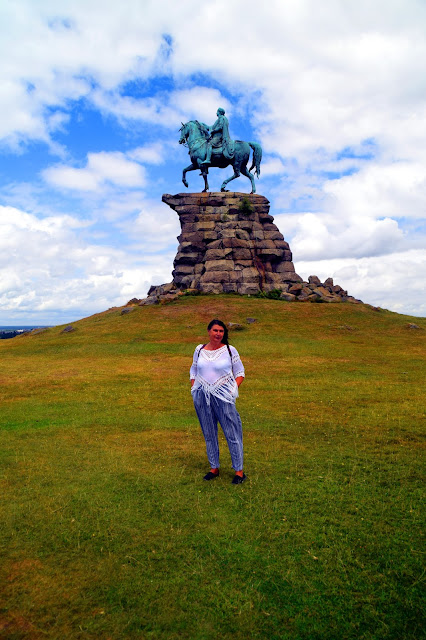Windsor Great Park has witnessed countless events
throughout history, dating back to pre-Saxon times, each of which has
left on this impressive landscape.
From William I using the landscape as a hunting
ground a thousand years ago, to the original planting of the Long Walk
by Charles II, to Queen Victoria entertaining on the shores of Virginia
Water - and even today our Royal connections continue to be as strong as
ever under the stewardship of HRH the Duke of Edinburgh, the Ranger of
Windsor Great Park.
http://www.windsorgreatpark.co.uk/en/heritage/the-story-of-windsor-great-park
http://www.windsorgreatpark.co.uk/en/heritage/the-story-of-windsor-great-park
Queen Victoria loved Virginia Water from childhood, and is known to have frequently enjoyed picnicking on its borders. At that time, her husband Prince Albert, the Prince Consort, had a significant impact on Windsor Great Park - committing himself to improving the living conditions of Estate workers, building cottages and establishing the Royal School, so that Estate children could benefit from a thorough education.

George IV,
affectionately known as the ‘Fisher King’, recruited the help of the
architect Sir Jeffry Wyatville to introduce new features to the Virginia
Water landscape. His desire was that these features - including an
encampment of Turkish tents and the magnificent, oriental style fishing
temple - would be enjoyed by visitors to Windsor Great Park.
Five Arch Bridge, found to the north of Virginia Water, was
built under George IV’s reign . Important
additions from this time are the folly of the Leptis Magna Roman
Ruins and of course the iconic Copper Horse statue, erected at the Long
Walk as a tribute from George IV to his father, George III.

Queen Elizabeth the Queen Mother and George VI moved into The Royal
Lodge as the Duke and Duchess of York in 1931, and The Queen Mother
continued to live here after the sad passing of her husband in 1952. It
was also during this time, under the continued patronage of George VI,
that Sir Eric Savill created The Savill Garden and The Valley Gardens.
On 19 June 1937, King George VI planted the first of 60 Oak trees,
which were planted to commemorate the King’s coronation and is known
today as the King George VI Coronation Plantation. There are 20
different species, which were planted by representatives of 59
Commonwealth countries and are placed in positions that correspond with
the compass points at which the different parts of the empire lie in
relation to the British Isles.
In 1066, when William the Conqueror claimed victory at the Battle of
Hastings, the Forest of Windsor was already established - serving as a
vital resource for the people who lived in the area. William
the Conqueror was who was the first monarch to be inspired by the grasslands
of Windsor Great Park as a place to build a residence. In fact, the
outer walls of Windsor Castle as they stand today are the same walls
which were constructed by William the Conqueror - and some of the
original oaks planted during his reign a thousand years ago, can still
be seen standing tall within the Park now.
Windsor Great
Park underwent significant changes following the Restoration of the
Monarchy in the 17th Century, and many of the recognisable features that
our visitors enjoy today originated during this period. With the
Restoration came the introduction of the formal avenues, most notably
the Long Walk - an addition that was influenced by King Charles II’s
fondness for French architecture.

The Savill Garden has much to offer in terms of Royal associations – with The Rose Garden having been opened by HM the Queen in 2010, and the New Zealand Garden being opened to the sounds of the Haka in the presence of HRH the Duke of York in 2007. Then the Summer Gardens host the ‘Royal William’ rose and rarely seen ‘Catherine Rose’ along with many other royally inspired blooms and trees which were planted by members of the Royal family, including HM Queen Elizabeth the Queen Mother. There is also, more recently, the Queen Elizabeth rose, newly-planted to mark HM the Queen becoming our longest reigning monarch.
Windsor Great Park has numerous stories to tell involving the current Royal Family, and has hosted many Royal celebrations over the years – most recently on The Long Walk in 2015, when HM the Queen lit the first beacon to mark the recent 70th Anniversary of the VE Day celebrations.
Duke of Cumberland, whilst he was Ranger of Windsor Great Park in the mid 1700s. Seeking a more natural and picturesque landscape, the Duke set about creating the largest man-made lake of its time in Britain - assisted by architects Henry Flitcroft and John Vardy, and the topographical draughtsman Thomas Sandby. Today, the towering Cumberland Obelisk on Obelisk Lawn celebrates the inspiring work of the Duke of Cumberland in his time as Ranger of Windsor Great Park.







































































































No comments:
Post a Comment